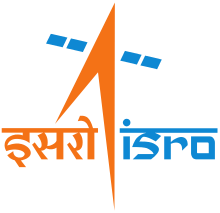SCATSAT-1
SCATSAT-1 (Scatterometer Satellite-1) is a satellite providing weather forecasting, cyclone prediction, and tracking services to India. It has been developed by ISRO Satellite Centre, Bangalore whereas its payload was developed by Space Applications Centre, Ahmedabad.[1] The satellite carries a Ku-band scatterometer similar to the Oceansat-2 which became dysfunctional after its life span of four-and-a-half years. India was dependent on NASA's ISS-RapidScat for prediction of cyclone forecasting and weather prediction.[2] The data generated by this mini-satellite will be used by NASA, EUMETSAT and NOAA.
| Operator | |
|---|---|
| COSPAR ID | 2016-059H |
| SATCAT no. | 41790 |
| Mission duration | Planned: 5 years Elapsed: 3 years, 10 months, 21 days |
| Spacecraft properties | |
| Bus | IMS-2 |
| Manufacturer | ISRO |
| Launch mass | 371 kilograms (818 lb) |
| Start of mission | |
| Launch date | 26 September 2016 |
| Rocket | PSLV-C35 |
| Launch site | Satish Dhawan Space Centre - First Launch Pad |
| Orbital parameters | |
| Reference system | Geocentric |
| Regime | Low Earth at 720 km altitude |
| Period | 100 minutes |
Oceansat series | |
Payloads
The designated primary payload of the satellite is a scatterometer which is similar to the payload launched with Oceansat-2. The spacecraft is built around a standard IMS-2 Bus and the mass of the space craft is 371 kg. The weight of the scatterometer is 110 kg.[2] This satellite will measure the wind speed and its direction over the ocean.
Development
Space Applications Centre of ISRO was responsible for development of the payload whereas ISRO Satellite Centre, Bangalore was responsible for the bus. SCATSAT-1 was being built at 60% of the actual production cost and 1/3rd of the actual predicted time.[3] It was built using leftover parts of other satellite missions.[4]
Launch
The satellite was launched on September 26, 2016 from the first launch pad of Sathish Dhawan Space Center, Sriharikotta and launched by PSLV-C35 the first multi-burn technology used by ISRO.[5] The microsatellites AlSat-1B, AlSat-2B and Pathfinder-1, and nanosatellites AlSat-1N, NLS-19, PISat and Pratham were launched along with Scatsat-1.[6] It has been the longest PSLV mission till date.
Scatsat Data
Scasat-1 data are made available to the public through via FTP from the Meteorological and Oceanographic Satellite Data Archive Center, a e-portal maintained by Space Application Centre, Indian Space Research Organization.
Near-real time level 2 ocean wind vectors on a 25 km/50 km swath grid, based on the backscatter measurements of the Scatsat-1 are available through the e-portal of EUMETSAT.
See also
References
- "Special Section: SCATSAT-1".
- Nair, Avinash (May 27, 2015). "To predict cyclone, ISRO to build advanced satellite". The Indian Express. Ahmedabad. Retrieved February 8, 2016.
- Singh, Tanaya (February 6, 2016). "New ISRO Satellite to Predict Cyclones Being Built at 60% the Actual Cost, in One Third of the Time". thebetterindia.com. Retrieved February 8, 2016.
- "How Isro is 'recycling' to build a cost-effective satellite at 60% the cost and one-third the time". Firstpost. 5 February 2016. Retrieved 16 November 2017.
- "SCATSAT 1". Retrieved February 8, 2016.
- "SCATSat-1 (Scatterometer Satellite-1)".

